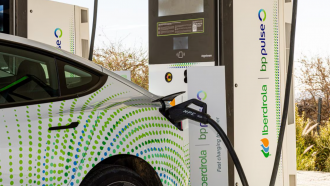Monday, Dec. 12, would have marked the day NASA launched eight microsatellites to better aid in forecasting weather and understanding hurricanes. However, the launch was cancelled after problems with the hydraulic pump responsible for releasing the rocket from the carrier aircraft arose.
"A hydraulic pump aboard the Orbital ATK L-1011 airplane, which is required to release the latches holding Pegasus in place, is not receiving power," explained NASA in a statement.
Teams are in place to assess the issue after the carrier aircraft lands.
Cyclone Global Navigation Satellite System
As part of the the Cyclone Global Navigation Satellite System (CYGNSS), the microsatellites will be the first to probe into the inner workings of hurricanes in detail, allowing for a better understanding of how the weather event rapidly intensifies. With a better grasp of how hurricanes work, CYGNSS aims to improve how hurricane intensity is forecast.
The first prototype of the microsatellites was built and tested in 2014 at the Southwest Research Institute. Once in orbit, the microsatellites are expected to hook up with the Global Positioning System, receiving direct and reflected signals from GPS satellites. Direct signals will pinpoint the location of the CYGNSS satellites while reflected signals will respond to the roughness of the ocean surface, from which wind speed can be measured from.
"Forecasting capabilities are going to be greatly increased," said Tim Dunn, NASA Launch Manager, who added he particularly appreciates the mission because he is from Florida. The state had to deal with Hurricane Matthew earlier in the fall.
Original CYGNSS Launch Details
The eight CYGNSS microsatellites were set to be delivered to Earth Orbit via a Pegasus XL rocket from Orbital ATK. The rocket and its micro-satellite payload would have been air-launched from a modified L-1011 aircraft called Stargazer, that will be taking off from Florida’s Cape Canaveral Air Force Station's "Skid Strip" runway.
Once the Stargazer reaches an altitude of about 39,000 feet, it will release the Pegasus XL rocket, which will ignite after five seconds and leave the atmosphere. Within 15 minutes of the launch, the CYGNSS microsatellites are expected to be in orbit with deployed solar arrays.
Typically, Pegasus XL launches are carried out from California’s Vandenburg Air Force Base or the Kwajalein Atoll’s Reagan Test Range. The rocket will be launching from Florida because the CYGNSS satellites are headed for the “hurricane corridor.”
NASA's Launch Services Program and the CYGNSS team has been working together for about three years. While the microsatellites will be launching from Cape Canaveral, majority of their prelaunch preparations were done at Vanderberg.
Originally, the CYGNSS launch was set for November but had to be rescheduled when Hurricane Matthew hit. The Pegasus XL rocket, the Stargazer aircraft, and the microsatellites were safe at the time in California but the severe weather still threw a wrench in their launch schedule.
CYGNSS is set to last for two years. Should the pump issue be resolved right away, the next possible chance for NASA to launch the mission is on Tuesday.









